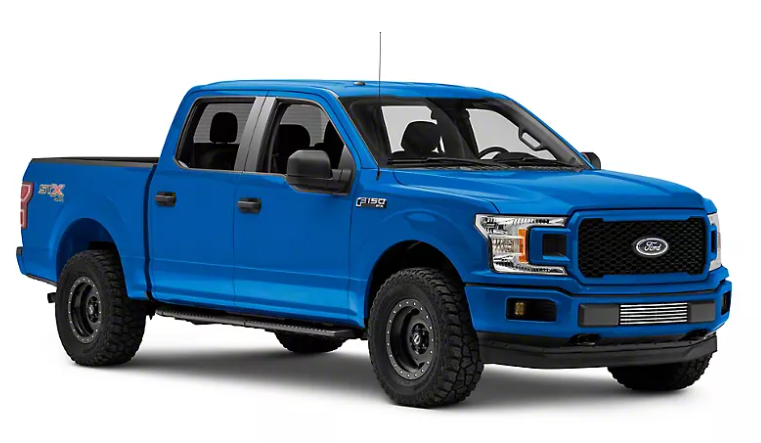

Lowering Springs vs. Coilovers
By Averi Melcher - November 29, 2018
In the never-ending quest for style and performance, one of the main ways to increase both is by lowering your ride with coilovers or springs. As they say, “decrease the altitude, increase the attitude.” Not only do lowered vehicles look more aggressive, but when you decrease your ride’s height a few inches, you’re also increasing some of the handling benefits. Lowering your ride is pretty straightforward. It’s an aftermarket upgrade that can be done with a lowering kit and a bit of patience. But, of course, there are different ways to get it done. Which often raises the question of which is better: lowering springs or coilovers? The truth is, we can’t answer that so simply. It really depends on what you’re hoping to achieve with your lowering kit. Each one comes with their own unique benefits and drawbacks. Each one has a slightly different menu of what they serve up for your ride.
What are Lowering Springs?
Let’s start with the simpler of the two: lowering springs. Like your factory springs, lowering springs are made to support the weight of the vehicle and fit nicely in place of the originals with little to no modification necessary – simply remove the old springs and swap in the new. But that’s about where the similarities end. Otherwise, what would even be the point of upgrading to lowering springs? First of all, lowering springs are physically shorter than OEM springs (thus the name), so your vehicle sits lower to the ground as a result. But of course, as with most things when modifying a car, there’s a tradeoff. Spring rates are measured in pounds per inch, so a spring that’s shorter than stock must have a higher spring rate to compensate and still support the same amount of vehicle weight. The downside of this is that with a firmer spring, the ride quality likely will become harsher. But in the world of performance driving, the benefits often outweigh the drawbacks. First, by lowering your center of mass, your handling and stability will improve. Combining this with a higher spring rate results in less body roll to keep your car flat and composed during cornering. For the enthusiast, this is often a very acceptable price to pay for the increase in cornering ability.
What Do Lowering Springs Do/Provide?
Better handling, more stability, less body roll for those sharp corners – those are just a few things lowering springs can do for your car. Here are some others:
- A cost-effective way of lowering your vehicle
- Better handling in corners
- Compatibility with existing parts – simply remove old springs and replace with new
- Preset spring rates – no adjustments to make after installation
- Preset ride height – not able to be raised or lowered
- Available in linear or progressive spring rates
What Are Coilovers?
While lowering springs are designed simply to replace your factory springs and play nice with the rest of your existing components, coilovers are an entirely different animal. The term “coilover” is short for “coil spring over strut,” and while they may look somewhat similar to a typical strut & spring, they aren’t. With coilovers, your vehicle’s entire shock/strut and spring combination are replaced with matched performance dampers and springs. Unlike lowering springs, coilovers offer a much greater range of adjustability including ride height, spring pre-load, shock damping, and rebound. Also, most high-end coilover kits are lighter than the factory components they replace to reduce unsprung weight and further increase handling.
What Does a Coilover Do/Provide?
You know what is it, but what does a coilover do? In short? A lot. You’ll definitely notice these updates on future drives.
- Adjustable ride height
- Adjustable damper settings
- Adjustable rebound settings
- Firmer spring rates than lowering springs alone
- Ability to swap to firmer/softer springs
- Matched damper & spring combinations
- Interchangeability of parts – can replace springs, dampers, perches, pillow ball top mounts, etc. independently of other components
Picking Between Coilovers vs Springs
Let’s break down the debate and help make this coilover vs springs decision easy for you. If you are a die-hard road-racer who trailers your car to the track every weekend and burns through an entire set of brakes and tires each time, then coilovers are the right choice for you. If this does not sound like you, then a set of lowering springs would suit you fine. Be aware that if you drive your car on the street every day, the harsh ride that coilovers deliver will likely become tiresome very quickly. Coilovers typically lower your car more than a set of springs alone, leaving you vulnerable to steep driveways, speed bumps & rough, uneven road surfaces. Coilovers are more expensive than lowering springs. As said before, if you absolutely need coilovers because your skill behind the wheel has you driving at the very limit of your current suspension’s ability, then it’s a justified expense. But for the sake of practicality, if you drive your car on normal streets, then a set of performance shocks or struts paired with high-quality lowering springs are more than enough to provide the increased thrills and aggressive stance you’re looking for. Lowering springs and coilovers are two different means to largely the same end. Each has their own benefits and drawbacks, but both are more than capable of hot lapping at the track and getting you home afterward. Which route you choose all depends on what you’re willing to sacrifice for performance and how much you want to spend.